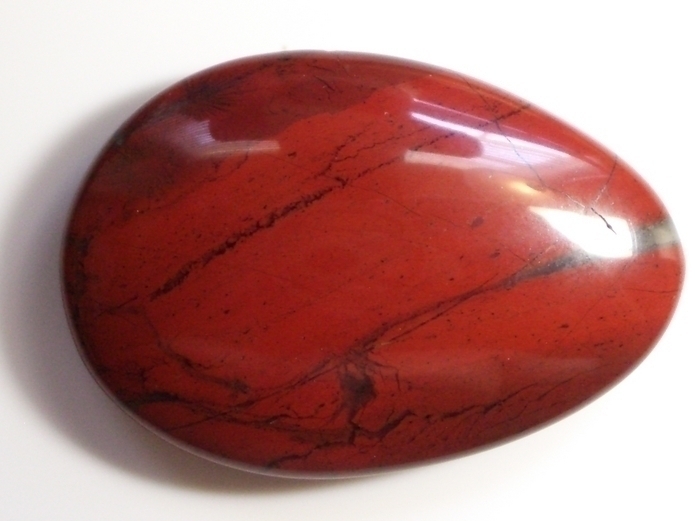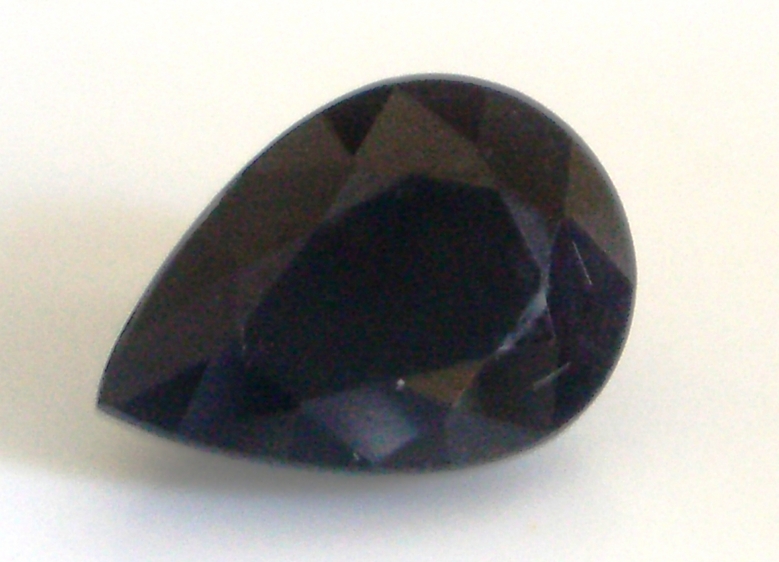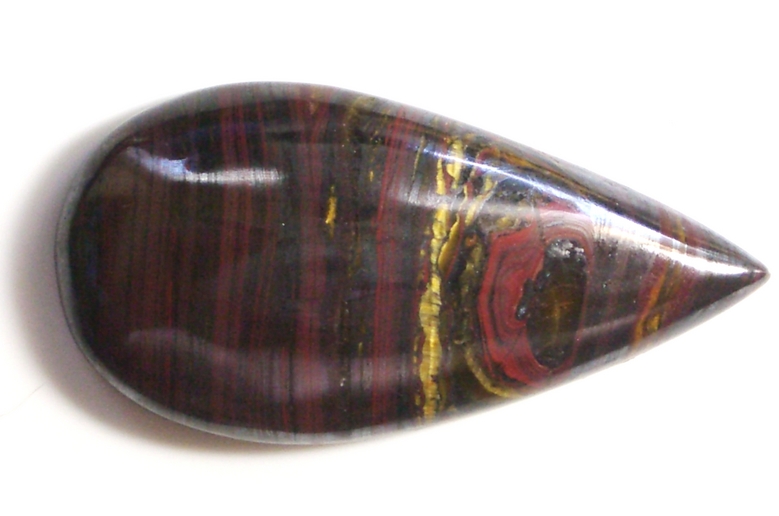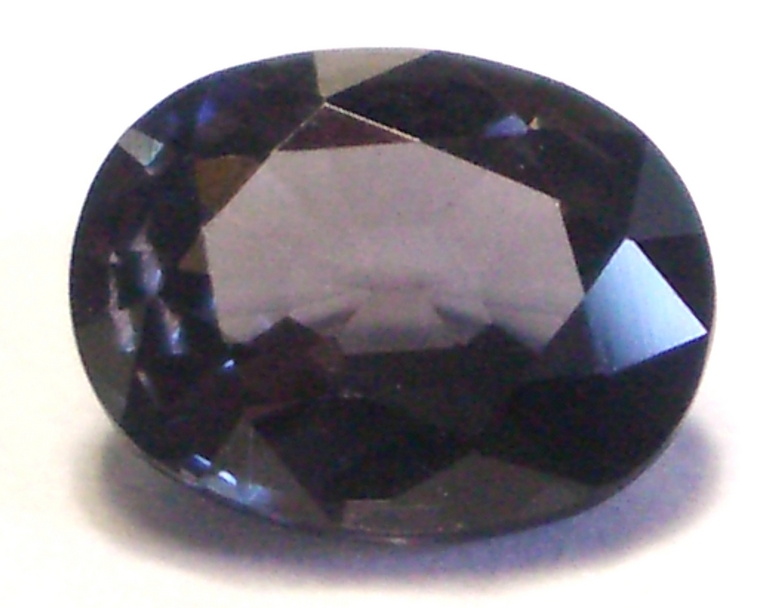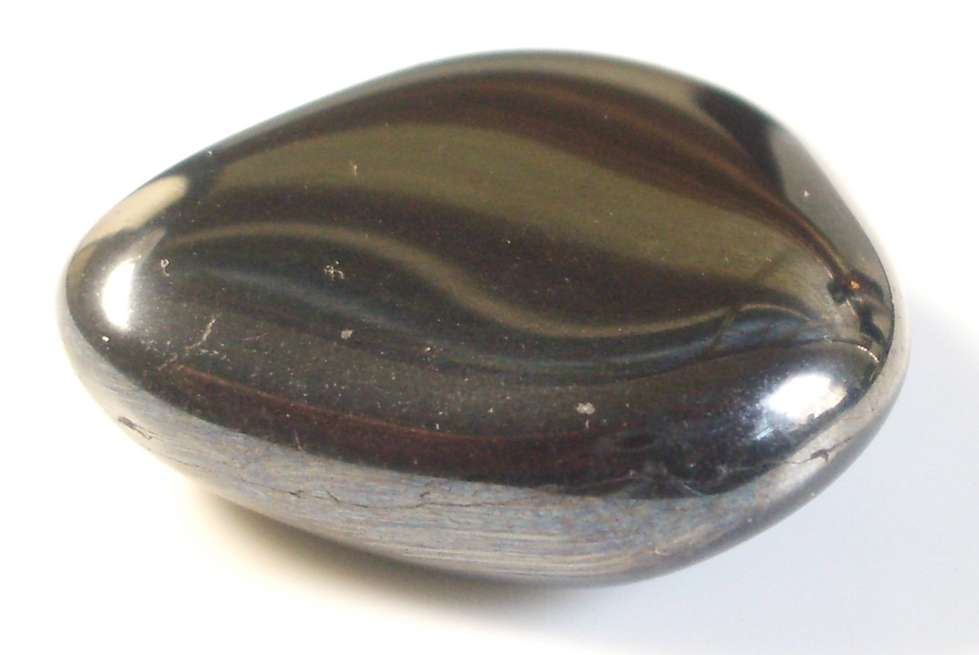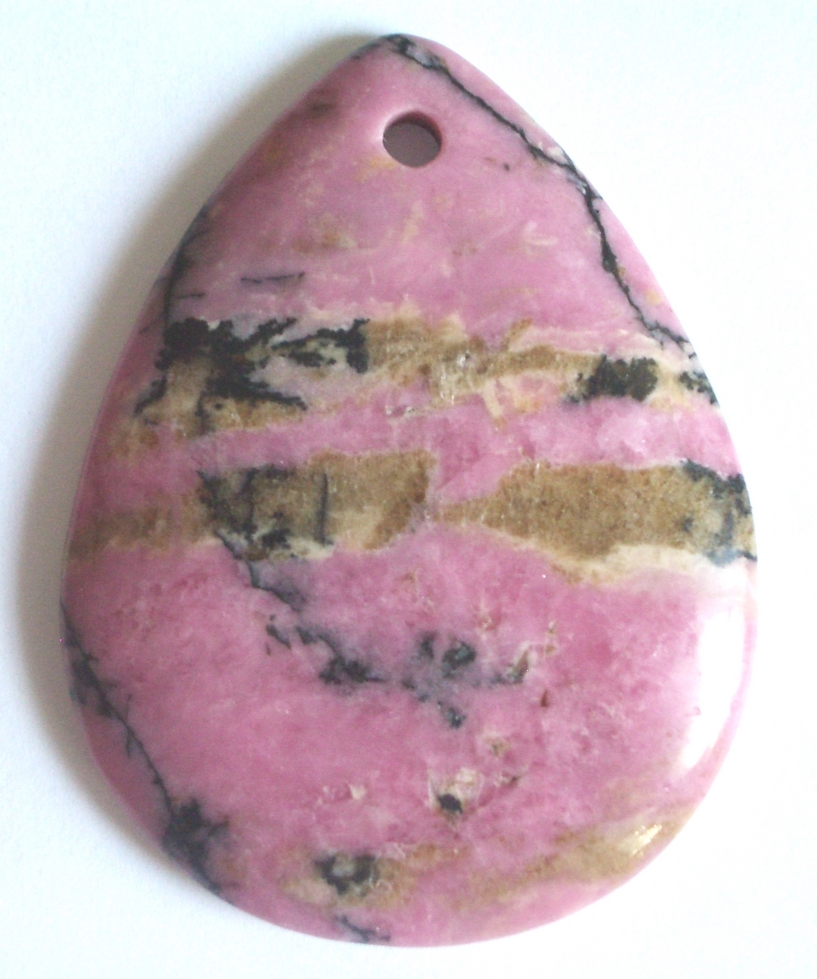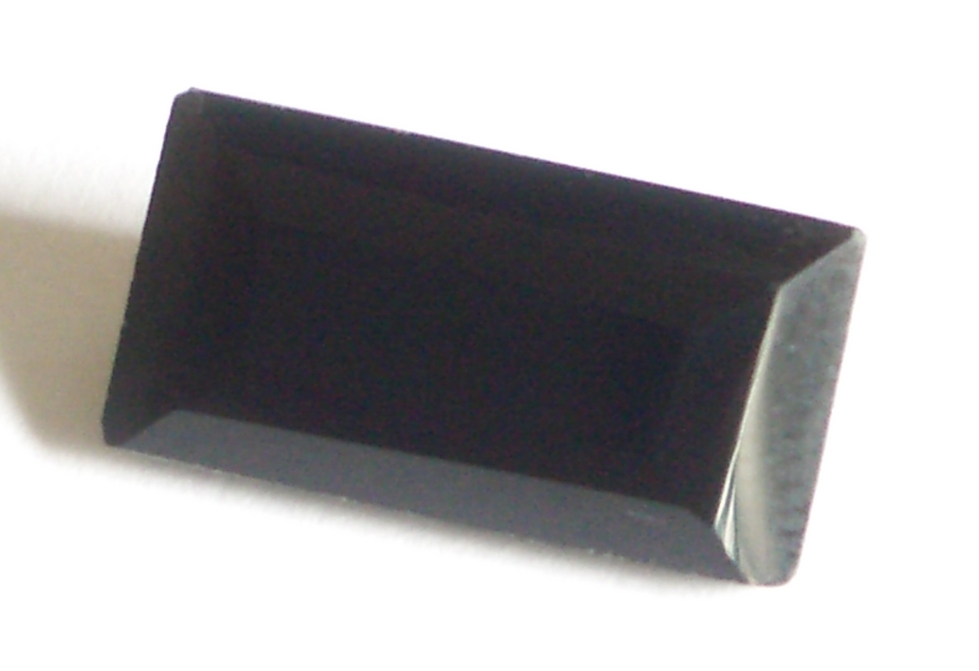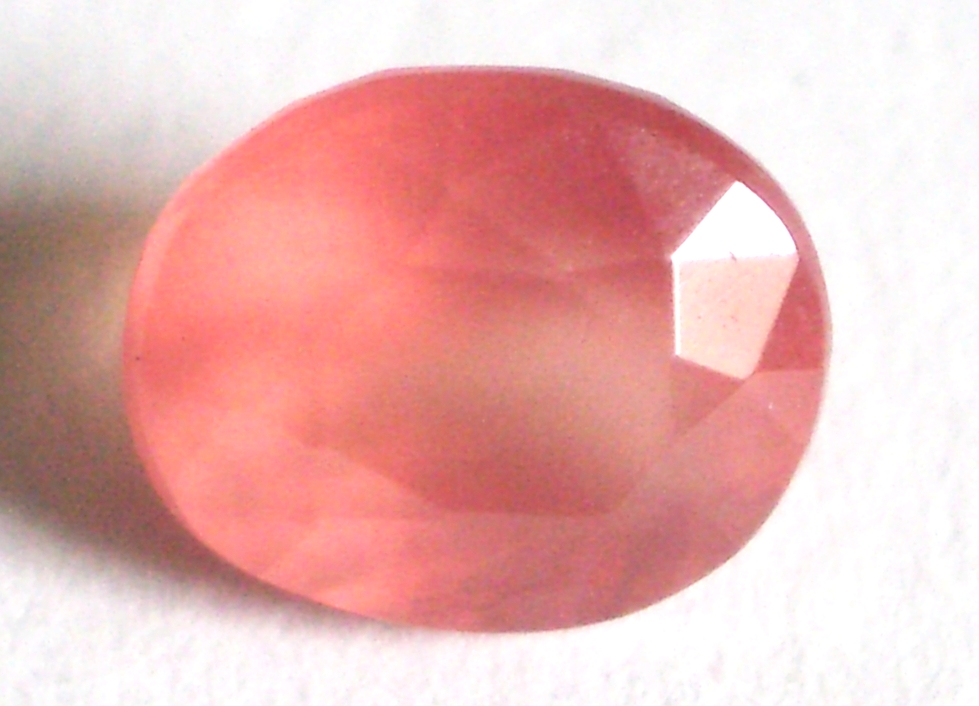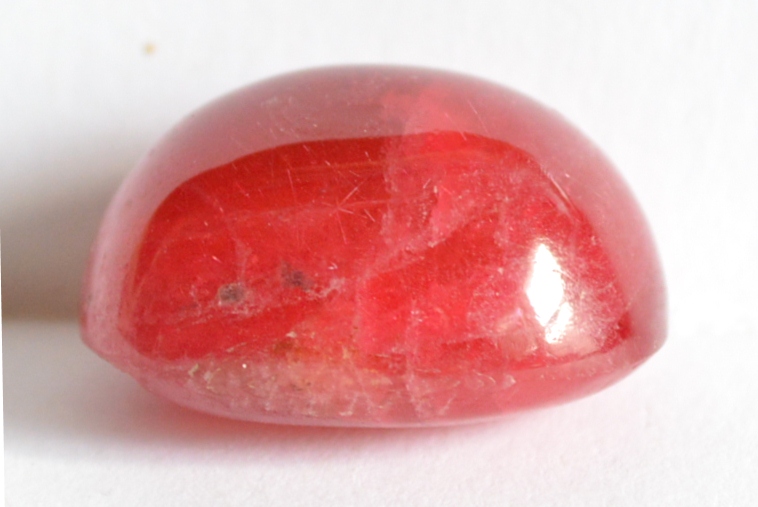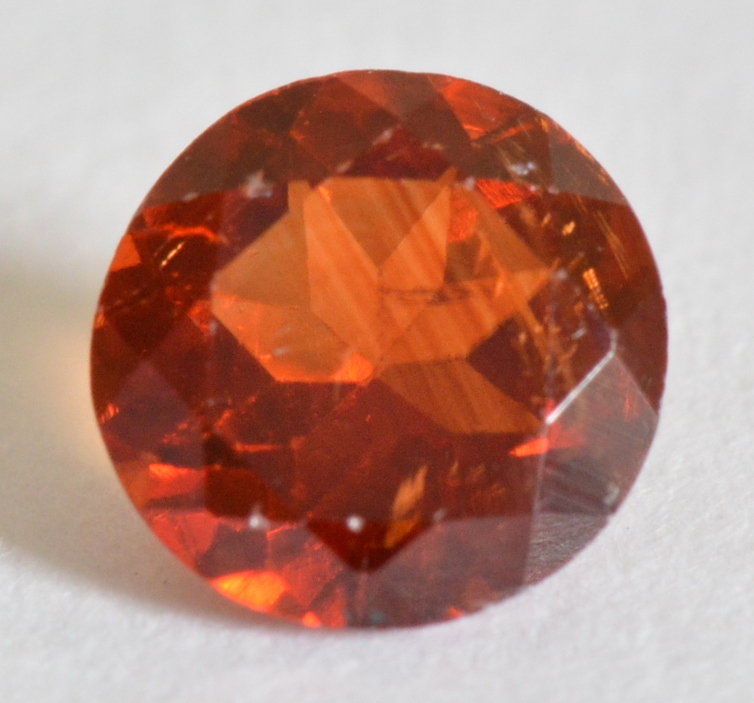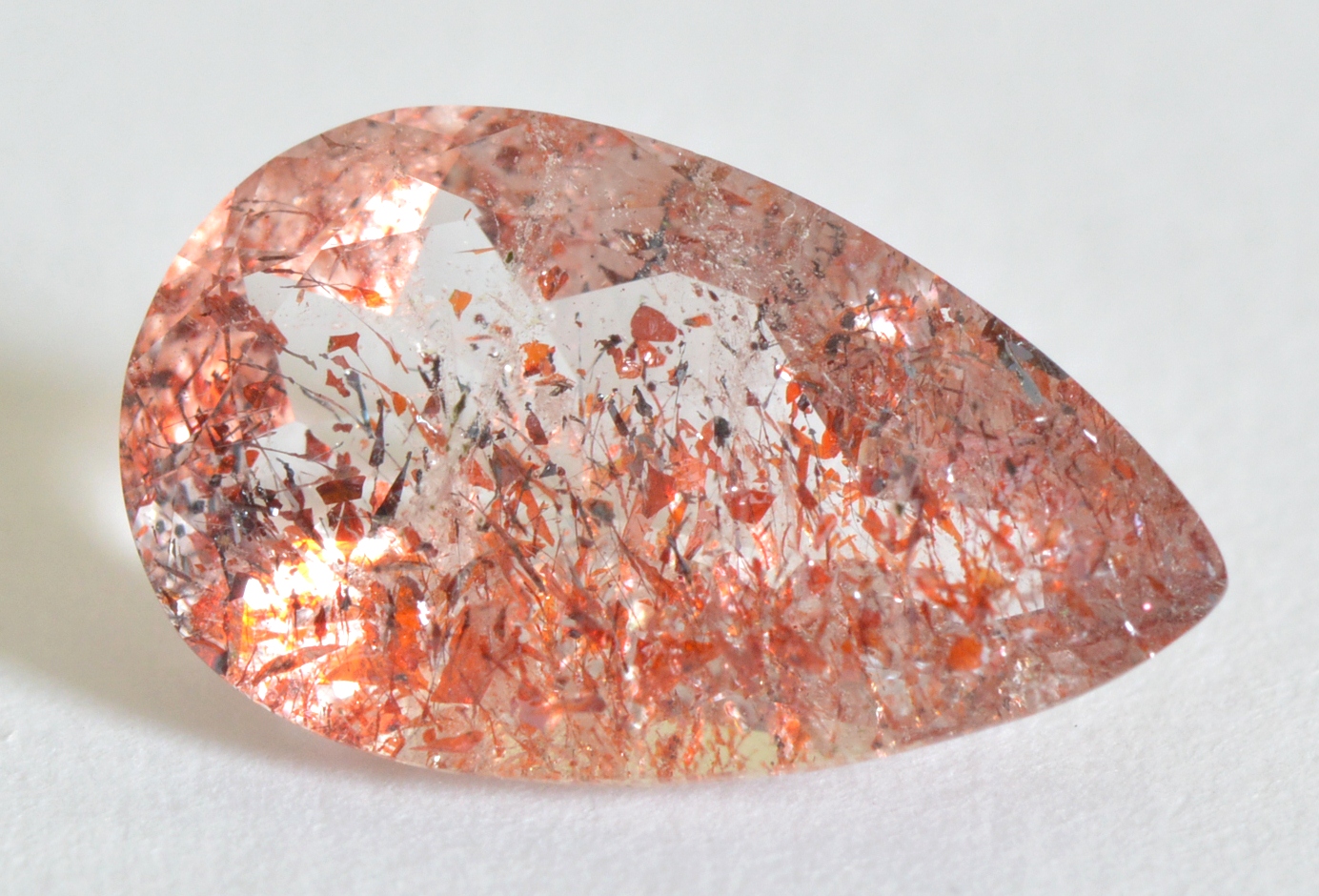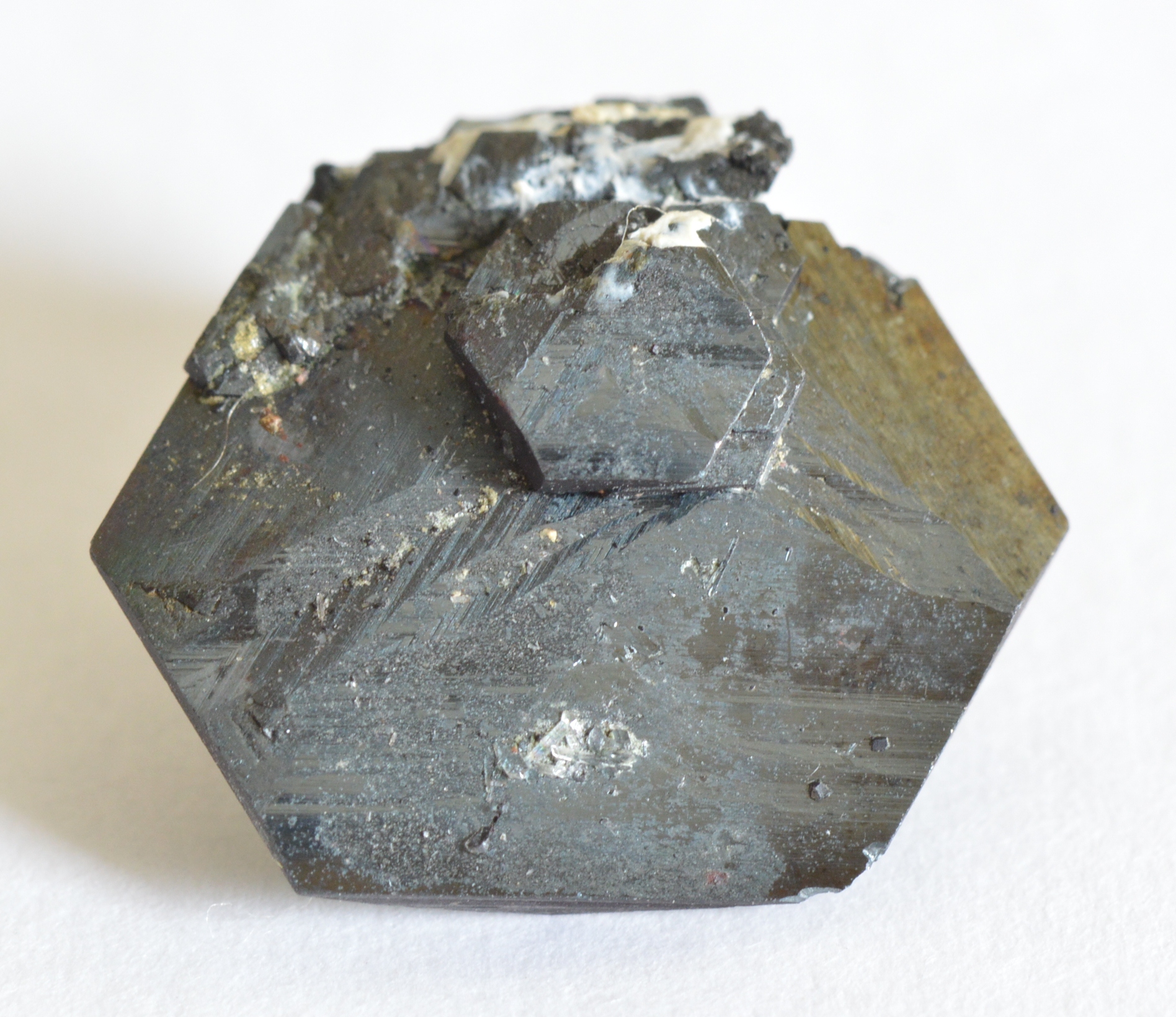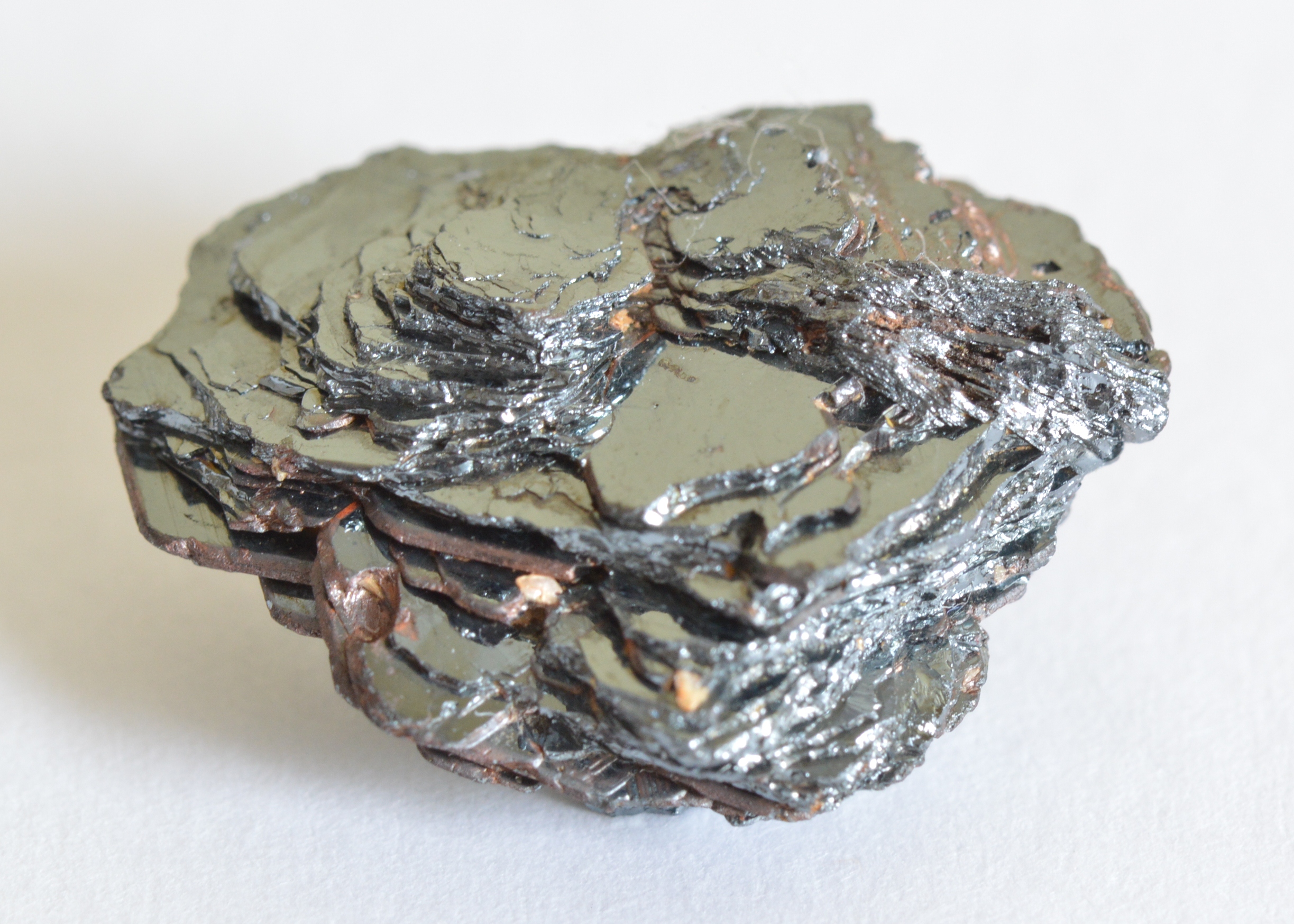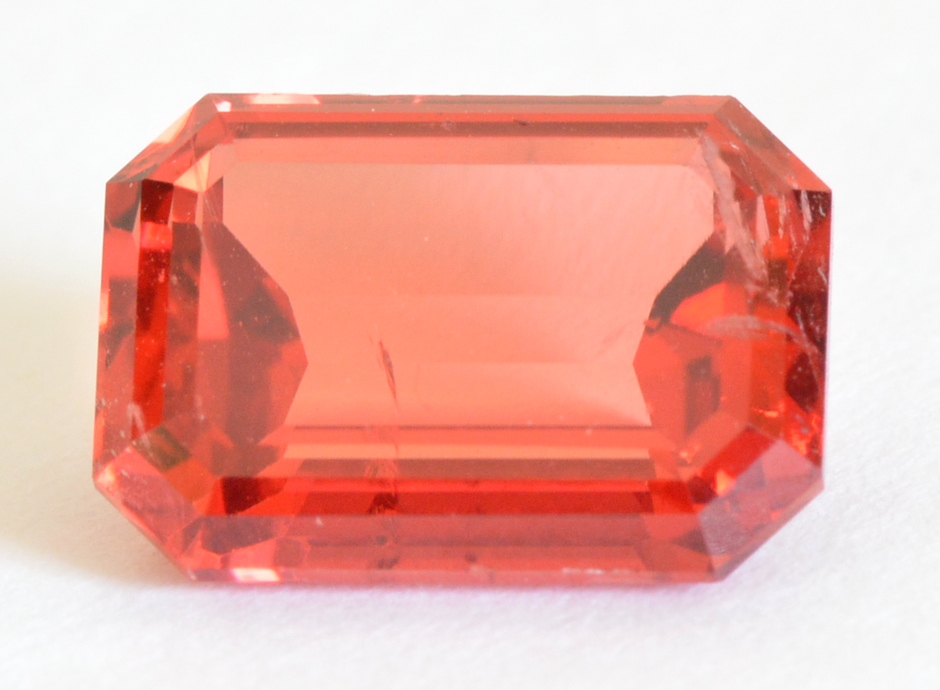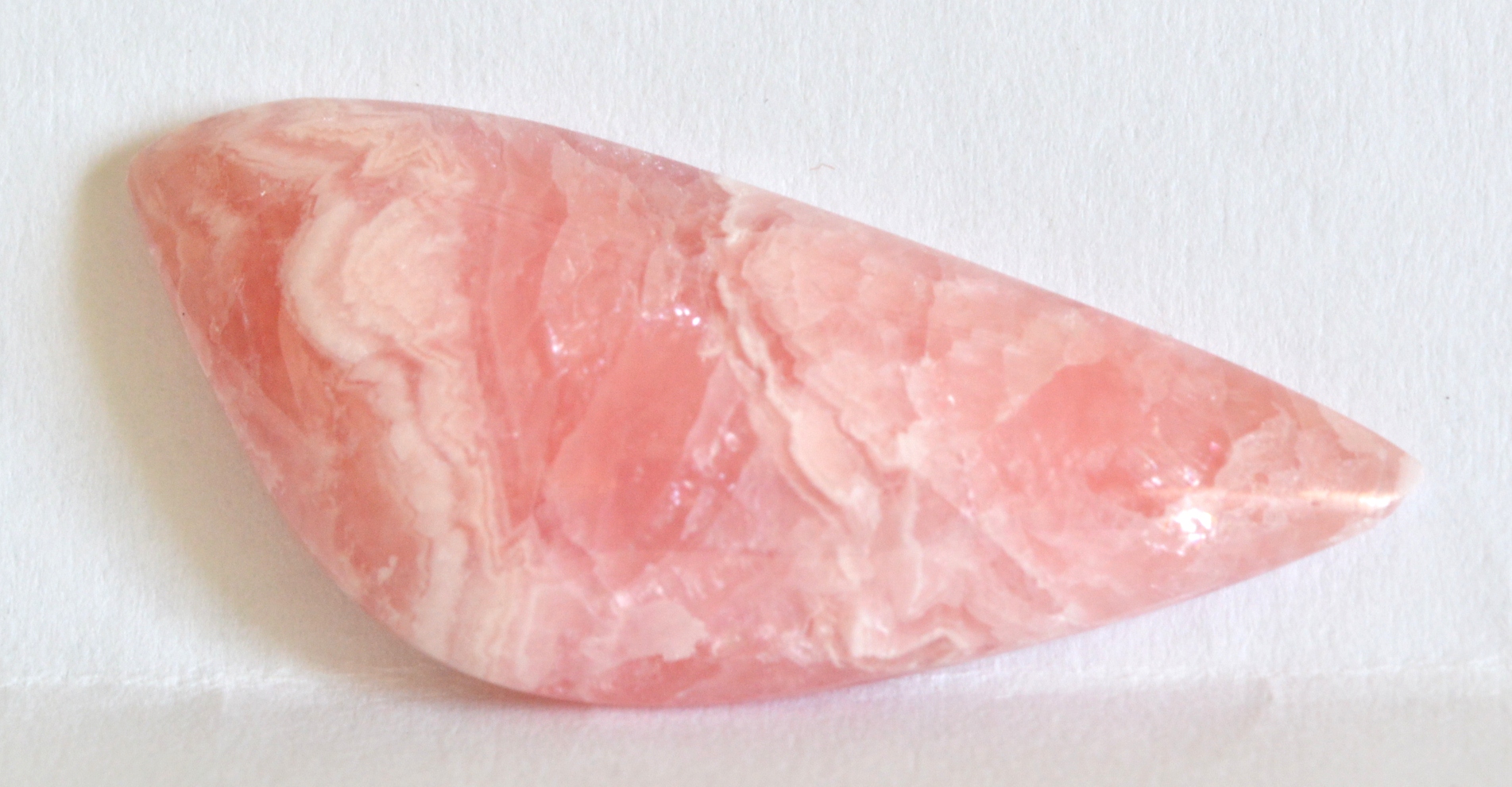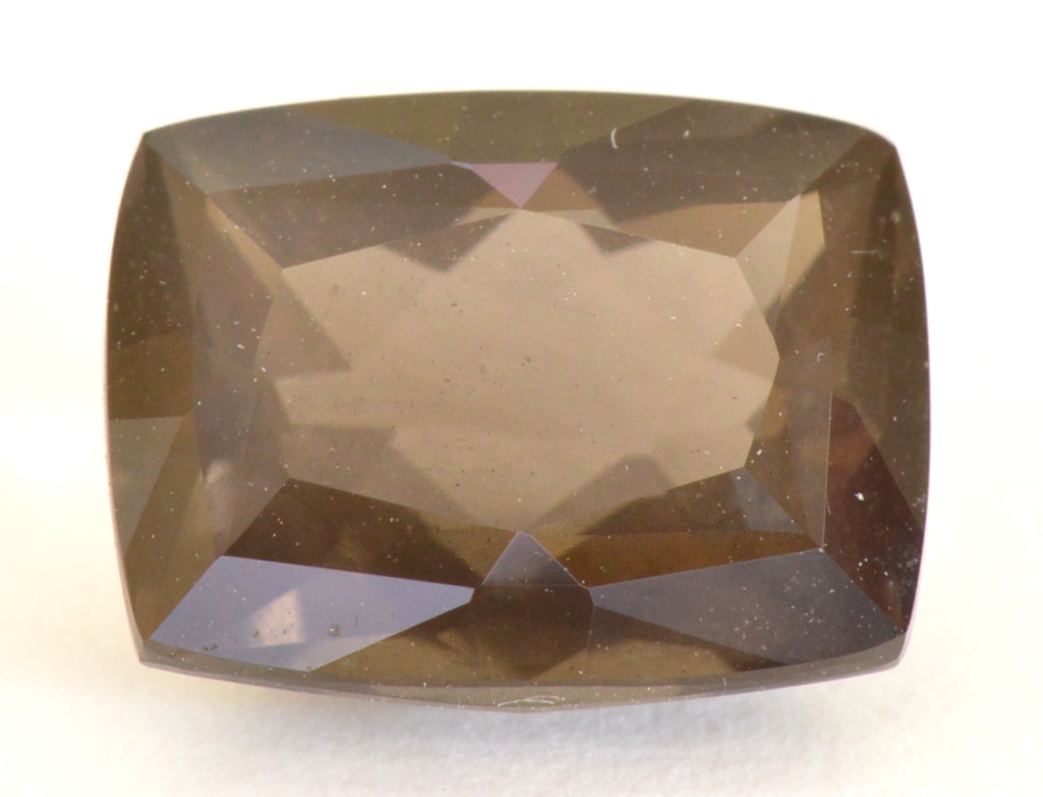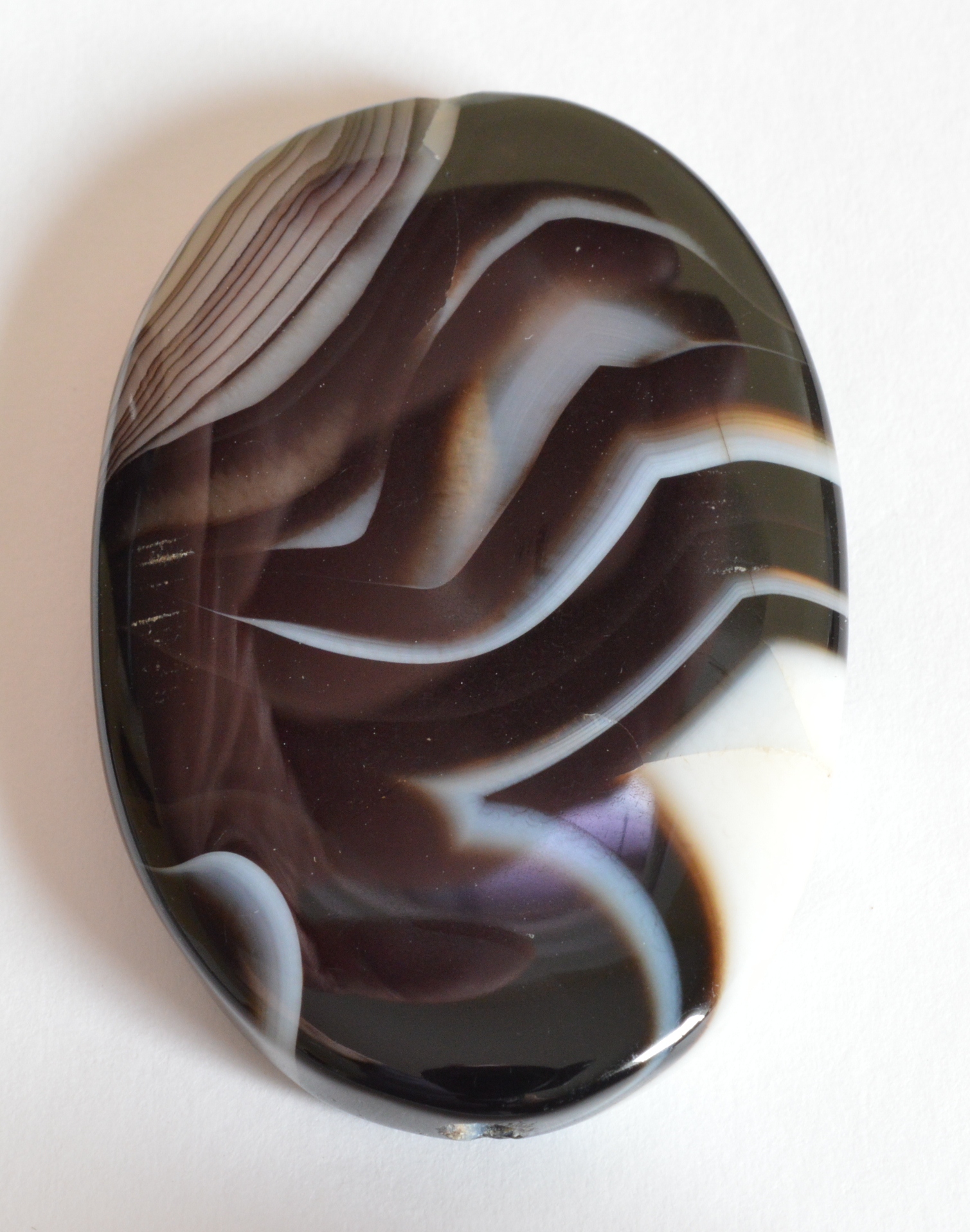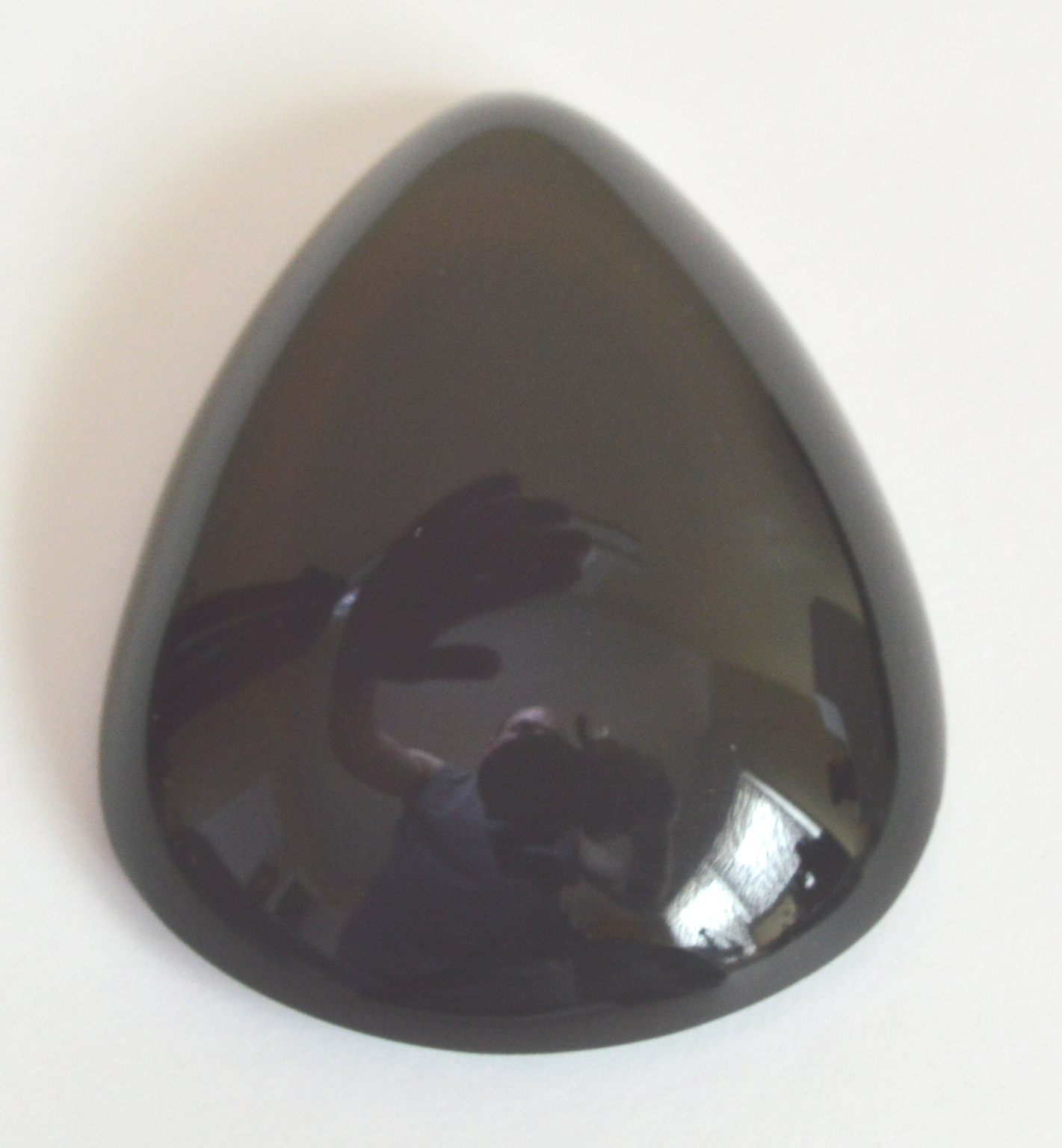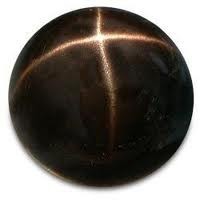Translucent Rhodochrosite
Translucent Rhodonite
Iron Meteorite (Picks Up)
Opaque Black Tourmaline (Drags)
© Kirk Feral 2009-present, All Rights Reserved. These materials may be duplicated for educational purposes only. No part of this website may be duplicated or distributed for profit, for commercial purposes, or for posting to another website, without the expressed written consent of the copyright holder.
Black Gems: Opaque black stones such as black Tourmaline (Schorl), black Garnet (Melanite), black Star Diopside, black Obsidian, Psilomelane and black aggregate rocks are very magnetic because of high iron and/or manganese content, and will often be picked up or dragged by an N52 magnet. Opaque Black Star Sapphires are only weakly to moderately magnetic.
Serpentine Aggregate
(Picks Up)
Tiger Iron (Picks Up)
Transparent Black Obsidian
(Moderate)
Natural Black Hematite
Hexagonal Crystal (Drags)
Opaque Rohdonite
Hematite: Hematite is a natural iron oxide mineral that forms hexagonal crystals. Most of the published information about natural Hematite informs us that it is non-magnetic or only weakly magnetic, but such information is based solely on testing with common household magnets. Natural Hematite is very magnetic and will be picked up by a neodymium magnet. However, Hematite does in most instances have a considerably lower magnetic susceptibility than its man-made counterpart "Hematine", which is an iron oxide compound manufactured with barium and strontium additives. Natural Hematite is a paramagnetic mineral, while man-made "Hematine" is a ferromagnetic alloy. Hematite picks up with a much weaker force than does "Hematine".
Topaz
with Hematite Inclusions
Man-made "Hematine"
Tumbled Pebble (Picks Up)
Metallic Cabs and Minerals: Cabs and mineral specimens containing solid iron, iron-nickel alloys or iron compounds can be intensely ferromagnetic and jump to an N52 magnet. Examples include Meteorites, Tiger Iron, and man-made "Hematine", a shiny imitation of Hematite used in jewelry. These gems and minerals can retain a weak magnetic field of their own after being exposed to a magnet.
When cut in thin section, Hematite appears red rather than black or gray. Transparent natural gemstones such as Hematoidal Topaz, "Strawberry" Quartz and Oligoclase "Sunstone" (a.k.a. "Confetti Stone"), all pictured below, contain natural red inclusions of Hematite. The hematoidal inclusions can be extremely thin. These gems show no attraction to an N52 grade neodymium magnet, probably because the amount of iron is so small.
Translucent black gems like Obsidian can be strongly magnetic, but may not pick up like opaque stones. Transparent bluish-black Spinel gems and transparent brownish-black Obsidian gems show weak to Moderate responses due to relatively low iron.
Completely transparent faceted Rhodochrosite and Rhodonite gems are rare and expensive, but transparent gems of average size will show a Pick-up response as easily as any Garnet. Red body color is often different from colors found in typical red Garnet gems. However, transparent red Rhodochrosite from South Africa (below left) can closely resemble red Garnet, and orange Rhodochrosite can resemble Spessartine. The rare transparent pink Rhodochrosite from China shown below (center) is the most magnetic natural transparent gemstone we have tested, surpassing Spessartine Garnet in measured susceptibility. If a magnet were the only identification tool used, transparent Rhodochrosite and Rhodonite could be mistaken for pink or red Malaya Garnet. The rare transparent Rhodonite from Brazil shown below (right) is as magnetic as red Spessartine Garnet.
Translucent and Opaque Gems That Pick Up
Rhodochrosite and Rhodonite are bright pink to red, mostly translucent to opaque stones that can show a Pick-up response. Opaque stones are commonly used as ornamental lapidary materials in the form of opaque slabs, cabs and beads. Large cabs can be too heavy to pick up with a magnet, but they show a strong attraction when floated. Rhodochrosite cannot be distinguished from Rhodonite by magnetic response alone.
Opaque Rhodochrosite
Some ornamental mineral cabs, and some cabs fashioned as gemstones from rocks (aggregates of minerals), will stick to a magnet. Pick-up and Drag responses can be seen with cabs containing various minerals such as red Jasper, green Serpentine, black Nephrite Jade, and red Rhyolite. In these cases, magnetic responses may not help with gem identification. Other cabs and rocks with similar colors and the same minerals may not pick-up or drag because the concentrations of iron and manganese are lower.
Some black gems are magnetically inert (diamagnetic). Black Carbonado Diamond, which is composed of non-magnetic carbon, is an example. Other examples include black organic gems such as black Coral, black Pearl and Jet, none of which contain paramagnetic metals.
Natural black Onyx is a Chalcedony variety colored by microscopic inclusions of iron oxide compounds, and this gem variety also shows no magnetic attraction. There are several possible reasons why Onyx is not magnetic: 1) dispersed ions of iron may be in concentrations too low to generate a magnetic attraction, as is the case with orange Carnelian Chalcedony; 2) black color may be due primarily to intervalence charge transfer processes that do not produce magnetic susceptibility; 3) the Onyx may be dyed or carbonized. Most black Onyx on the market today has been treated.
Black Onyx (Inert)
Transparent Rhodochrosite
China, (Picks Up)
Transparent Rhodonite
Australia, (Picks Up)
Natural Hematite
"Iron Rose" (Drags)
Transparent Rhodochrosite
South Africa, (Picks Up)
Quartz
with Hematite Inclusions
To clearly separate natural Hematite from man-made imitations, the direct method using a household magnet instead of a neodymium magnet is actually the preferred test. Most natural Hematite, including native varieties such as hexagonal crystals, "Iron Rose" Hematite and glittery "Specular" Hematite, will not be picked up by a relatively weak horseshoe magnet or a refrigerator magnet. In contrast, man-made "Hematine" beads and cabs will often jump to these weaker magnets.
Oligoclase
with Hematite Inclusions
Transparent Bluish Black Spinel
(Weak)
Banded Onyx Cabochon (Inert)
Opaque Black Obsidian (Drags)
Both of these pink to red gem species are idiochromatic and owe their color to high concentrations of manganese within their chemical compositions. Faceted translucent Rhodochrosite and Rhodonite gems are uncommon, and they characteristically have a foggy translucent appearance. They are highly magnetic, and gems of average size can be picked up by an N52 magnet.
Black Star Diopside is an opaque variety of gemstone that contains magnetic metallic inclusions as an identifying characteristic. This gemstone is fashioned into cabochons. Black Star Diopside is the most strongly magnetic natural gemstone we have ever found, with measured magnetic susceptibilities surpassing that of natural Hematite. Unlike transparent Diopside gems such as Chrome Diopside and Iron Diopside, Black Star Diopside gems show a Pick-up response to an N52 magnet, and will even show a Drag response to a common refrigerator magnet. Needle-like inclusions of Magnetite are likely responsible for the magnetism and asterism in Black Star Diopside, and this may be an example of ferrimagnetism rather than paramagnetism.
Black Star Diopside (Picks Up)
Natural Magnetite Crystals (Pick Up)
Opaque Cabs and Aggregates: Opaque stones that have high concentrations of iron impurities or large inclusions containing iron can exhibit ferromagnetic, ferrimagnetic and antiferromagnetic responses. These types of magnetic responses are all far stronger than paramagnetic responses.
Opaque Red Jasper Cab
(Picks Up)
Magnetism in Gemstones
An Effective Tool and Method for Gem Identification
© Kirk Feral

